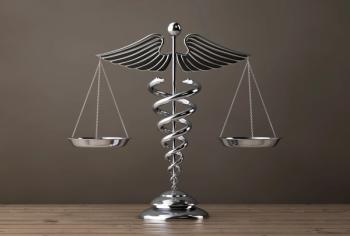
- Volume 0 0
Treatment Recommendations for Androgenetic Alopecia
Androgenetic alopecia is themost common cause of hairthinning in both men andwomen.1 The condition may presentitself at any time after puberty and usuallyis fully expressed by the fourth decadeof life.1 In androgenetic alopecia, thegradual transformation of terminal folliclesto vellus-like follicles producesshorter and finer hairs, also known asminiaturized hairs. These miniaturizedhairs represent the hallmark presentationof androgenetic alopecia.
Prevalence, Causes, FinancialBurden
About 50% of men and women in theUnited States display some expression ofandrogenetic alopecia by the age of 40.1-3Both men and women with this conditionhave an increased reduction oftestosterone to dihydrotestosterone(DHT) by the enzyme 5-αreductase. Datasuggest, however, that men are moreaffected because they have higher circulatinglevels of testosterone and higherlevels of the 5-αreductase enzyme intheir scalp follicles.1
Although scalp hair serves no criticalphysiologic function, hair loss can significantlyaffect self-confidence.4 Everyyear in the United States, it is estimatedthat ~60 million people spend $1.5 billionon various hair-regrowth treatmentmodalities.5
Treatment
The American Academy of Dermatologydeveloped aguideline for the care ofandrogenetic alopecia in1996.1 The goals for thetreatment of androgeneticalopecia involve increasinghair growth andstopping the progressionof hair thinning. Beforerecommending treatment,patients should bethoroughly examined bya dermatologist to assesscauses of hair loss and tohave laboratory testsperformed if needed.
There are 2 productsthat are indicated forandrogenetic alopecia:finasteride (Propecia) and minoxidil(Rogaine). Although both may show positiveresults, they may not be effective foreveryone.
Finasteride
In late 1997, the FDA approved oralfinasteride for the treatment of androgeneticalopecia in men. Finasterideworks by competitively inhibiting typeII 5-αreductase, an enzyme responsiblefor converting the androgen testosteroneinto DHT.6 Finasteride is indicatedfor the treatment of androgeneticalopecia in men with mild-to-moderatehair loss from the vertex and anteriormid-scalp area (middle front of thehead).7 Efficacy and safety have beenstudied in men between 18 and 41years of age.
The dose of finasteride is 1 mg bymouth daily. Effects of finasteride canbe seen within 3 months with a reductionof hair loss, and at 6 months newhair growth may be seen.7 If finasteridehas been effective after 12 months ofuse, patients should be maintaining thehair they already have and may beregrowing hair that had been lost. Noteverybody will respond to treatment;patients should discontinue use if finasteridehas not worked within 12months.7 Long-term treatment is necessaryin order to maintain and improvehair growth. Benefits from finasteridewill disappear after 12 months of discontinuation.
Possible adverse reactions from finasterideare breast tenderness and enlargement,as well as testicular pain. Asmall number of men have experiencedsexual side effects, such as decreaseddesire for sex, difficulty in achieving anerection, and a decreased amount ofsemen.6 Currently, finasteride is limitedto use by men only because of thepotentially teratogenic effects.4 Exposureof finasteride to a pregnant female maycause abnormalities of the external genitaliaof a male fetus. The drug is thereforecategorized as a Pregnancy RiskFactor X drug.6 It is safe for a man to takefinasteride, however, if he and his significantother are trying to conceive.7
Minoxidil
Minoxidil is a topical product also used for hair growth. Itworks by increasing the cutaneous blood flow to resting hair follicles.6 Topical use is for general thinning of the vertex, and thisagent is not intended for frontal baldness or receding hairlines.8Minoxidil is available in 2 strengths, 2% and 5%. The 2% minoxidilis indicated for women, whereas both strengths are indicatedfor men. Hair growth may be seen after 4 months of use, andfaster and improved results may be seen with the 5% minoxidil.8Any regrowth of hair will be lost after 4 months if therapy is discontinued.
In using minoxidil, 1 mL is applied directly to the dry scalponce in the morning and once within 2 to 4 hours before bedtime.The solution must be rubbed in once applied to the scalp;the medication will not work if it is merely applied to the hair.Hair products such as sprays, mousses, conditioners, and gelscan be used if minoxidil is applied and rubbed in first and hasfully dried.8
Adverse reactions that can be expected are itching and drynessof the scalp. Minoxidil should be discontinued if a patientreports any signs or symptoms of chest pain, rapid heartbeat,faintness, lightheadedness, or unexplained weight gain.8
Recent Studies
Iorizzo et al9 recently conducted a nonrandomized, unblinded,non-placebo-controlled study to evaluate the efficacy of oralfinasteride in combination with an oral contraceptive in premenopausalwomen with female pattern hair loss. Thirty-sevenwomen were administered 2.5 mg of finasteride daily, togetherwith an oral contraceptive containing 3 mg drospirenone and 30mcg ethinyl estradiol over 1 year.
Using global photography and the hair density score from videodermoscopy,together with a self-administered questionnaire, theresults indicated a statistically significant increase in hair densityscore in 12 patients (P = .002).Twenty-three of the 37 patients hadimproved hair growth, as evidenced by global photography. Noimprovement was reported in 13 patients; 1 patient experiencedworsening of the condition. No adverse reactions were discovered.Regardless, it is unclear whether the effects of increased hairdensity were a result of the finasteride or the drospirenone, whichhas been shown to elicit an antiandrogenic effect. Future studiesare required before finasteride may be recommended for womenwith androgenetic alopecia.
Dr. Santos is a pharmacy practice residentat St. Joseph's Medical Center inStockton, Calif. Dr. Pham is an assistantprofessor of pharmacy practice atArnold & Marie Schwartz College ofPharmacy and Health Sciences, LongIsland University, in Brooklyn, NY.
For a list of references, send a stamped, self-addressedenvelope to: References Department, Attn. A. Rybovic,Pharmacy Times, Ascend Media Healthcare,103 College Road East, Princeton, NJ 08540; orsend an email request to: arybovic@ascendmedia.com
Articles in this issue
about 19 years ago
Questions and Answers About Dry Mouthabout 19 years ago
Kidney Stoneabout 19 years ago
Rx Productsabout 19 years ago
can you READ these Rxs?about 19 years ago
OTC Productsabout 19 years ago
Discrimination in Design of an Rx Drug Insurance Program?about 19 years ago
compounding HOTLINEabout 19 years ago
A Calming Influence: An Analysis of ADHD Treatmentsabout 19 years ago
Carbinoxamine Products Still Within Reachabout 19 years ago
Wal-Mart Pharmacist of the Year: Indispensable to Her CommunityNewsletter
Stay informed on drug updates, treatment guidelines, and pharmacy practice trends—subscribe to Pharmacy Times for weekly clinical insights.

















































































































































































































